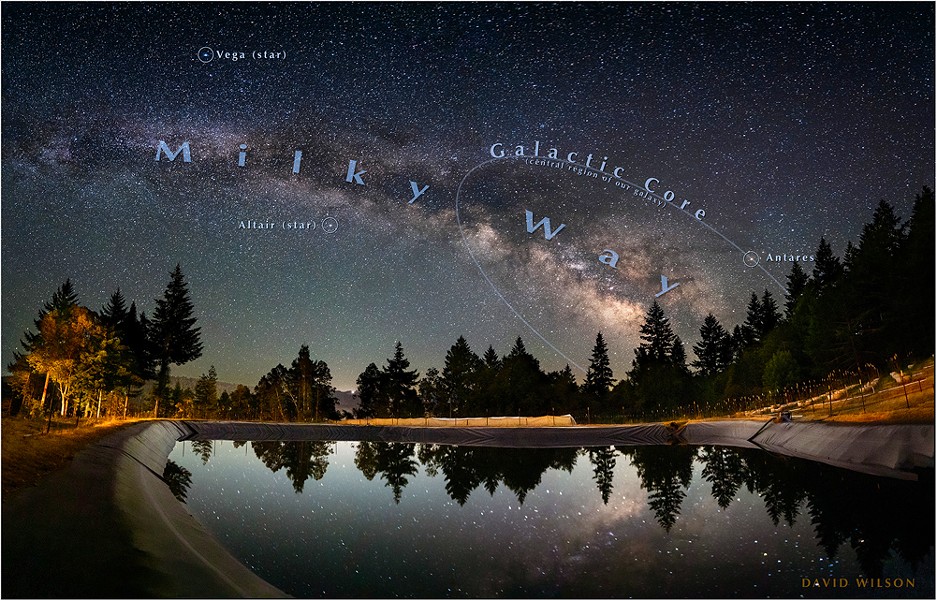Stargazing season is upon us, when the spectacular Milky Way is visible immediately after dark, soaring from horizon to horizon. Of course, one can watch the stars on any clear night and feel the immensity of space around us, but during the summer months, the Milky Way will make it worth the extra waiting for darkness to fall. At this time of year, the most dramatic portion of that misty belt is visible above the southern horizon.
The Milky Way is the name of both our galaxy and the band of lighter milkiness we see stretching across the night sky. It is lighter than the rest of the night sky because when we look toward it, we are looking through our pinwheel-shaped galaxy edge-on, right through the densest number of stars, glowing nebulae, etc. In our edge-on view, all of this blends together into indistinct milkiness in the vast interstellar distances involved. The Galactic Core is the center of the galaxy and it is that densest region, the part with the greatest visible detail from Earth, that can be seen low on the southern horizon after dark at this time of year.
To look to either side of the Milky Way's band is to look above and below the plane of our flattened spiral galaxy, out where the stars are fewer and less closely packed. If your mind is boggled, don't worry; it keeps it from being blown. You're extremely tiny in all this, not really important at all, helplessly adrift in outer space.
We begin to lose the best of this incredible galactic feature as fall progresses and the Milky Way's core sinks beneath the horizon. We won't see it back in the sky again until February, when you can only see it in the very wee hours of the morning. Now it's available before bedtime.
When you go out:
Give your eyes time to adjust to the darkness. Avoid using bright lights. After 20 minutes or so, your eyes will be fully adjusted to the dark, and you may be amazed at how much you can see both on the ground and in the heavens.
Bring warm, comfortable clothing, water and a camp chair or lawn chair.
Bring a headlamp or flashlight with red light ability. A normal flashlight's harsh light will destroy your night vision and that of anyone around you.
Looking at your phone will set your night vision back for minutes. Avoid it if you can. Sometimes I refer to my phone's stopwatch to help me time a really long exposure and for this purpose I turn its brightness way down.
May you enjoy many hours of night sky viewing.
To keep abreast of David Wilson's (he/him) latest photography or purchase a print, visit www.mindscapefx.com or follow him on Instagram at @david_wilson_mfx and on Twitter @davidwilson_mfx.



Comments